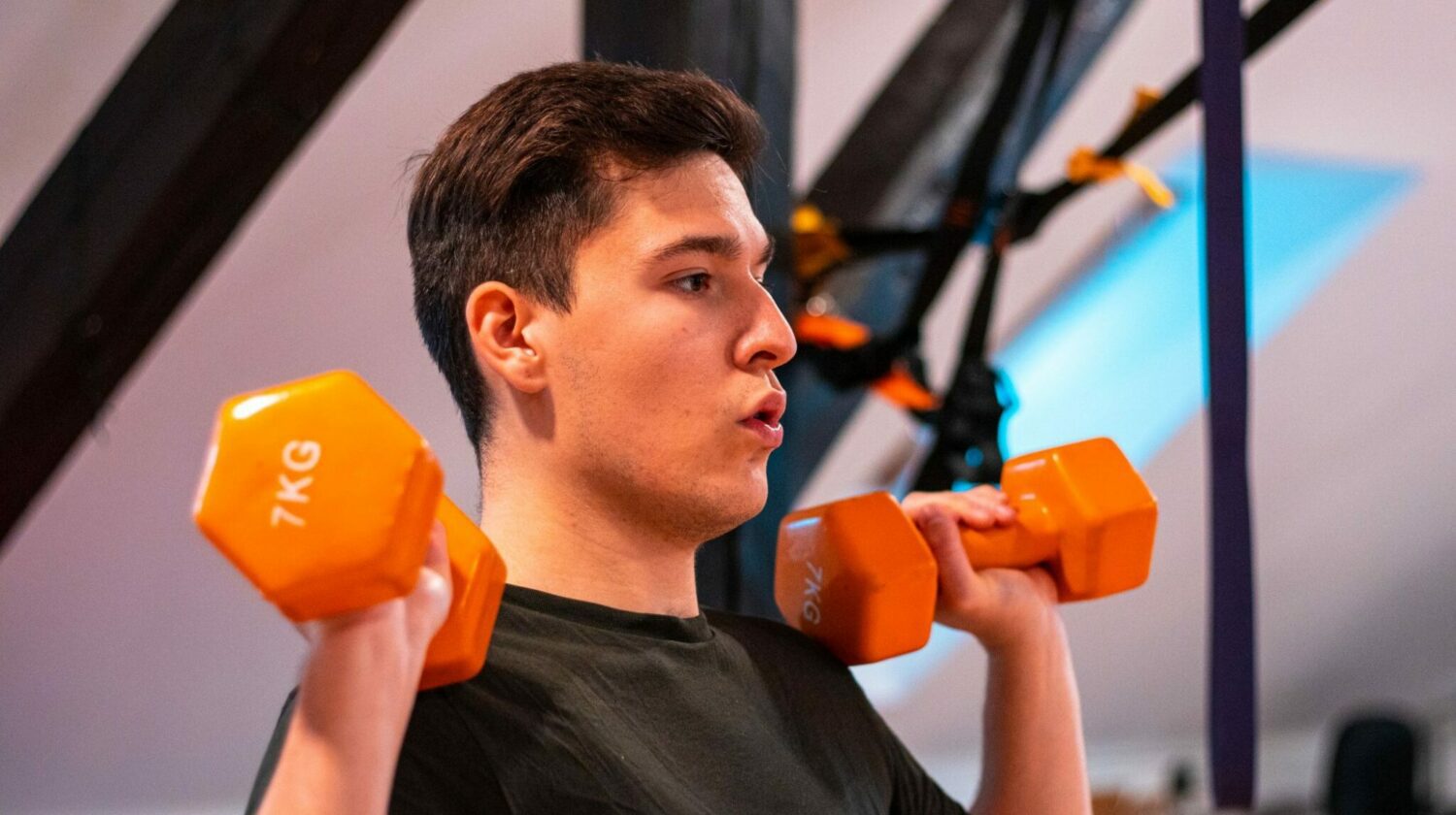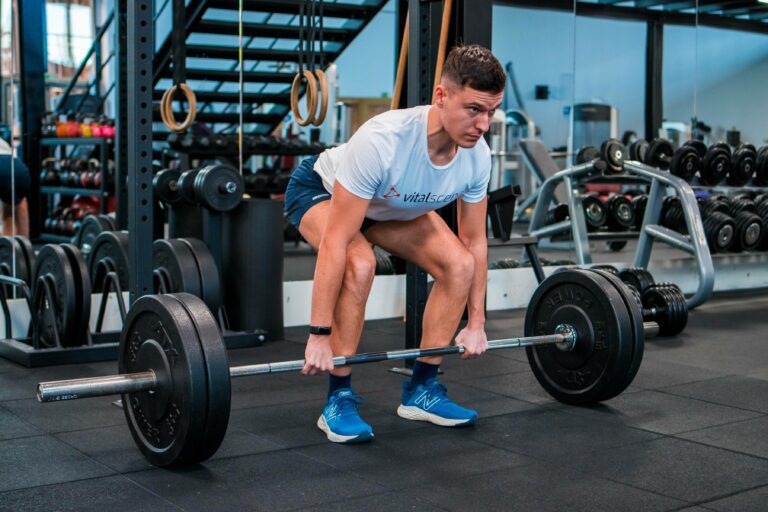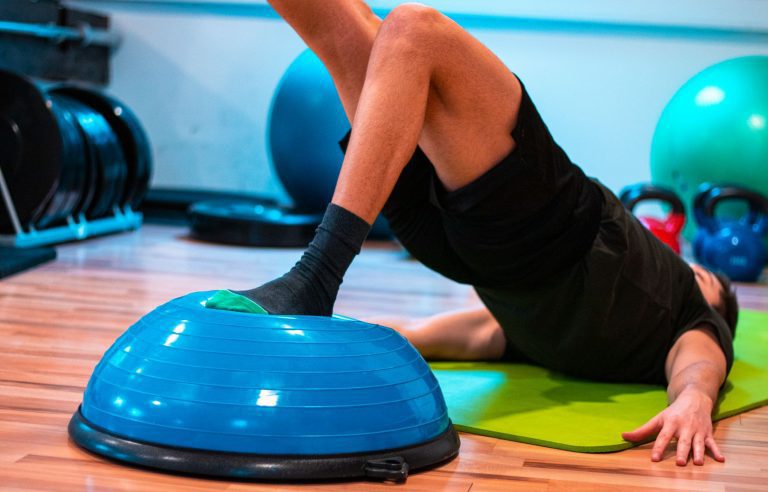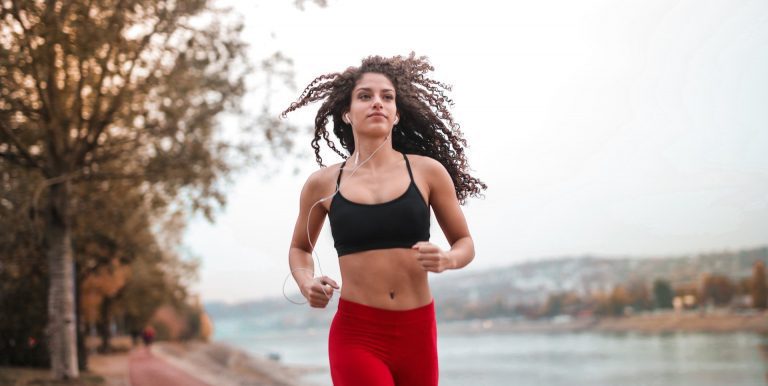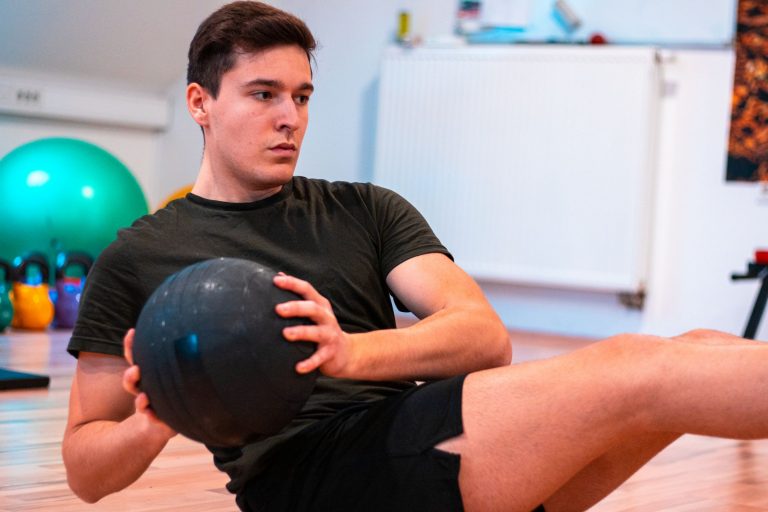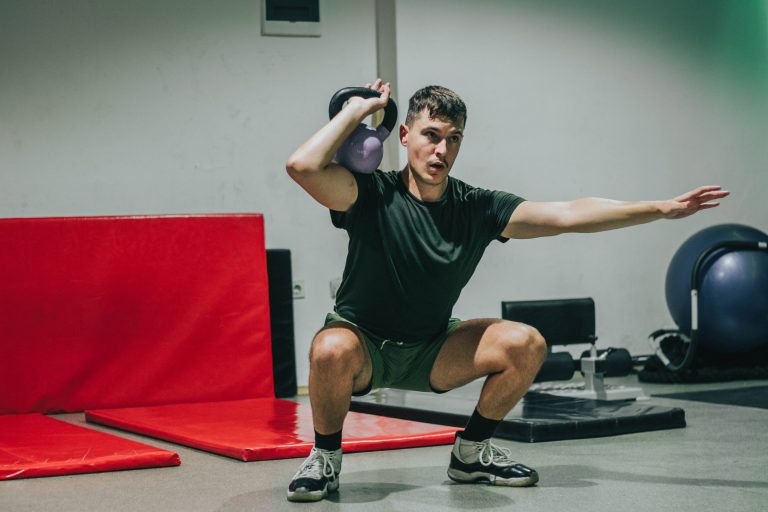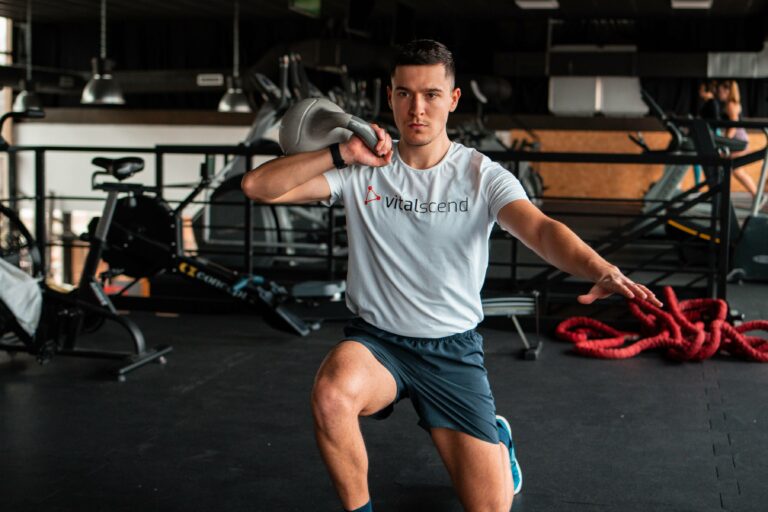Compound Movement Exercises: Science, Benefits and Best Exercises
What is Compound Movement?
Compound movement exercises are multi-joint movements in which we activate more muscular mass at one time. It is a complex movement that occurs in more than one joint, as opposed to isolation which usually uses one specific muscle and joint movement.
Compound is the healthiest way to train your body because you are not just pumping, but rather stabilizing and functionally using your body while gaining strength. This can improve your balance, posture, strength, and fitness level the right way if done correctly.
You have probably heard about functional training, thinking about how it differs from bodybuilding. Well, one of the components of functional fitness is enhancing functionality. This is done by combining mobility, balance, strength, and stabilization movements.
Gain Functional Strength
Functional strength is the strength that we can use in our daily lives. For example, you can pump on your triceps for as long as you like, the muscle will grow because it undergoes the usual physiological process, and you will look fitter but how many times in a day will you pull down an object in the same manner as you did that cable in the gym?
That’s where functional fitness comes in. It uses the main movements we need in our daily lives. Here is an example: a good compound exercise for your overhead lifting muscles (mostly core, deltoids, and triceps) would be overhead press in which you are using more muscle mass and more joints while stabilizing your core.
This can significantly improve and translate (neurologically, motoric coordination) in your everyday object lifting motion while keeping your core and glutes activated to keep you balanced. In opposition, the isolation shoulder pump will over time cause muscle shortening which can limit your Range of Motion.
Why are compounds more effective than isolation?
Compound exercise allows multi-joint movement which at the same time recruits more muscle fibers, higher muscle mass while moving in longer ROM improving your hip, shoulder, and ankle mobility. Aside from this, compound movements are very natural, primal movements that also help in stabilization and balance, when done correctly.
Full Body Workout At Home: Bodyweight or With Weights
Full Body Strength
Depending on your level of fitness you can use compound movements to your advantage, to stay fit or build muscle mass. In fact, it is very hard to do a non-compound movement using just your own weight, whether it’s a bodyweight workout on a mat or using bars, such as calisthenics.
As you progress, adding weights to your workout can significantly help with muscle growth, stabilization, and fat-loss. Most people fear weights and stay out of it, but the truth of the matter is, it is very hard to look huge if that’s your fear.
The next thing is people fear weights because it seems dangerous, but in reality, the isolation exercises are those that do the pumping. Doing weighted exercises such as squats, bench press, dips, and pull-ups are the same compound movement you would use in your calisthenics, just with extra weight.
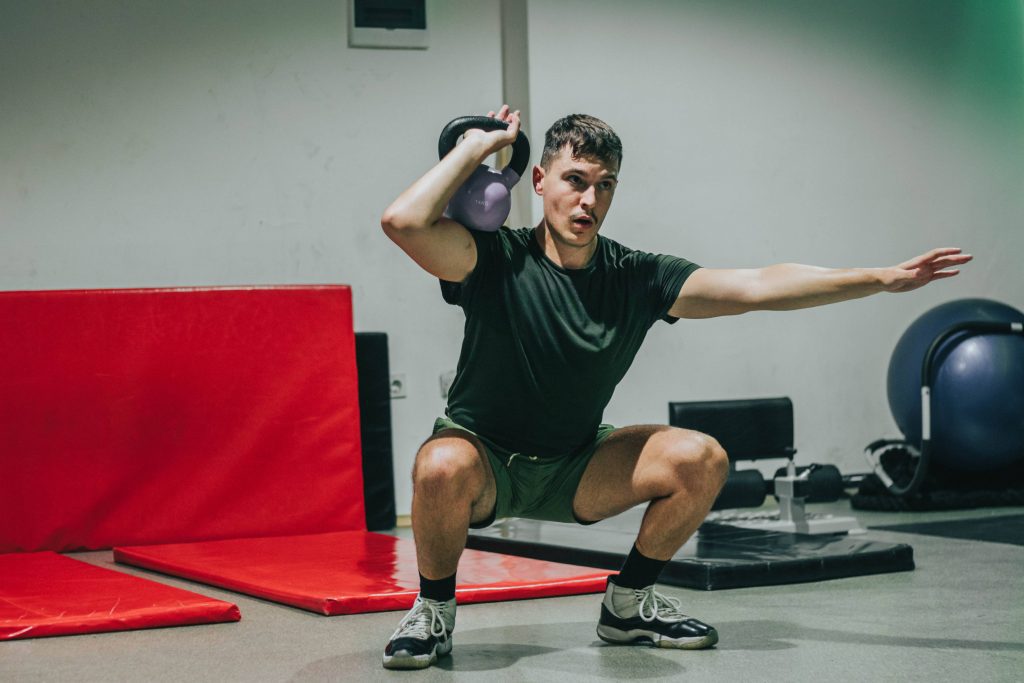
Weights give us huge potential to manipulate movements and target a specific muscle, which is the biggest reason to add them to your regime. Now don’t get me wrong, you can be fit and build a great amount of muscle with bodyweight exercises too. But for the most part, you will have to figure out new ways, and use bands or other tools to help you target a specific muscle.
Another topic that most people use as an excuse to not lift is joint degradation. And of course, if you are lifting with an improper form you can hurt yourself.
key point
Weightlifting if done in a proper manner (weights, posture, optimal ROM) can actually help your joints by improving mobility, as well as helping them absorb more liquids and regenerate faster. On the other side, it strengthens specific muscles that can hold the gravitational pressure that would otherwise go on your joints.
What Science Shows
The scientific literature confirms that compound exercises are a great way to add muscle size and lose fat, and more often than not, better in comparison to isolation or single-joint (SJ) movements. There were significant differences in adults, in adding muscle strength and size, improving balance, strength, and even endurance values with multi-joint (MJ) training. Here are a couple of examples:
1. Exercise May Be As Beneficial As A Drug
As drugs require the optimal dosage, for them to work so does exercise. This study shows that exercise has tremendous effects on our physical health and well-being, Psychological effects have been shown to be so powerful, that is worth comparing it to psychoactive drugs. (1)
2. Significant Fat-Loss and Functional Fitness Components Improvement in Postmenopausal Women
In this study, 50 women were observed for changes in fitness components and body composition due to functional training protocol utilizing elastic bands. There were significant improvements in improvements in coordination (-33.3%), strength (66.5%), agility (-19.5%) and aerobic capacity (-7%), and significant improvement in abdominal strength (188.2%) as well as drop in total cholesterol (-4.4%) and HDL (-9.9%). (2)
3. Compound Training Resulted in Higher Muscular Thickness, VO2Max & Fat-Loss in Comparison to Isolation Work
29 Amateur (non-lifters) men were enrolled in the study, half of which practiced isolation movements the other half with multi-joint compound movements. It turns out that greater muscle thickness was seen after compound workouts, while the peak torque of elbow flexors was higher with isolation exercises. What is interesting is the body fat percentage dropped by 11.3% for the compound group while only 6.5% for the isolation group. Also, VO2Max was significantly better in the compound group (12.5% increase) than in the isolation group (5.1% increase) (3)
4. Decreased Quality of Life in Women Who Obtained From Training Due to Knee Osteoarthritis
In women with knee osteoarthritis, there was a decline in performing physical activity, reduced physical performance along with the quality of life, and an increase in sitting times. This proves that with less activity, and less exercise (in this case caused by knee osteoarthritis) our life quality drops.
Conclusion. Our data suggest that knee O, in older women, can promote a decline in time spent performing physical activity and functional fitness with a decline in quality of life with an increase in sitting time. (4)
5. Women Aged 40-50 Increased their Muscle Mass as a Result of Aerobic & Anaerobic Training
In this study, women with around 30% excess body weight, at ages around 40-50 were split into two groups. The experimental one performed aerobic activity (quick pace walking at 40-60 HRmax) for five days a week and anaerobic exercises every second day. There was a significant improvement in chest, abdominal, and leg strength in the experimental group, due to compound fitness. (5)
Best Compound Exercise
Here is a list of the top compound exercises, split into two sections: The Upper and Lower Body, each containing five exercises.
Most of the exercises shown have the main focus on the upper or lower body but are also activating the other part. For example, an overhead press will mostly focus on the shoulder and triceps (push muscles) but the core and glutes are activated as well.
Upper Body Compound Exercises
Pull-Ups
- Perform: Grip the Bar with your hands set wider than your hips, squeeze your shoulder blades together (active hang), activate your core and point your toes forward (plantar flexion) and pull yourself up until the chin comes over the bar, then slowly go in the starting position and repeat.
- Muscle Activation: Trapezoid, Latissimus dorsi, Biceps, Teres Major, Posterior Deltoids, and Rhomboids.
- Variations: Chin-ups, Close Grip Pull-ups, Machine-assisted pull-ups, Machine Pull-Downs, and Eccentric (negative) Fall-downs.
Bent-Over Row
- Perform: Feet are shoulder-width apart, bend your knees slightly while keeping neutral spine (and neck), grip the bar with your palms facing down and wide, activate your core, squeeze your shoulder and lift the barbell until it touches your chest then slowly lower back and repeat (keep the spine straight).
- Muscle Activation: Trapezoid, Latissimus dorsi, Biceps, Teres Major, Posterior Deltoids, and Rhomboids
- Variations: Rack Row, Incline Bench Dumbbell Row, Unilateral Dumbbell Row, Seal Row, and Seated Low Row.
Weighted Dips
- Perform: Add Weighted West or Belt with weight plates, Grip the Dip Bars with your arms extended (don’t jump), squeeze your core tight and slowly lower down, hold your breath and push up (exhale). Make sure you don’t bend to one side and activate your shoulders.
- Muscle Activation: Triceps, Deltoids (anterior, middle), Chest Pectoralis (minor, major) Core muscles (abdominals, transverse abdominis, quadratus lumborum), and upper back.
- Variations: Triceps Dips, Weighted Dips, Chest Dips, Assisted and Bodyweight Dips
Bench Press
- Perform: Lie on the bench (head below the supported bar), Grab the bar two-three palms wider than your shoulders width, push the bar up bringing it to be leveled with your chest, Slowly lower the bar to your mid-chest and push back to extend your arms. Make sure you consciously indulge the chest and triceps, while keeping the spine and shoulder blades neutral and have someone spot you.
- Muscle Activation: Pectoralis Chest Muscles (minor, major), Anterior Deltoids, and Triceps
- Variations: Dumbbell Press, Incline or Decline Bench Press, Eccentric (Negatives) Bench Press, and Close Grip Bench Press.
Overhead Press
- Perform: Stand In front of your supported Bar, Grip the Bar Shoulder-width apart or wider, Set & Support the barbell on your shoulders while gripping it with your hands, elbows flexed, Inhale and squeeze your core, hold your breath, Slowly push upwards over your head, push your head forward (extend your neck) and lock your elbows (exhale), lower the weight down while returning your head in a neutral position, lower right before it touches your shoulder and push back up again. Make sure when lifting it, in the upper position the barbell should be over your spine, not too far forward or backward, but in as straight line as your shoulders allow. Going far too back can injure your shoulders, and too far forward will overactive front deltoids.
- Muscle Activation: Deltoids (anterior, middle, and rear), Triceps, Wrist extensors, Core (abdominals, transverse, oblique, and lower back muscles), Quads, Glutes, and Trapezoids.
- Variations: Push-Press, Dumbbell Overhead Press, Barbell Z Press, Single Arm Landmine Press, and Dead stop Shoulder Press.
Lower Body Compound Exercises
Back Squat
- Perform: Set the Bar at your Shoulder height and put the proper weight on it, Go under the bar in a facing direction, place the bar on your trapezoid muscles, grip it wider than your shoulders, squeeze your shoulder blades and unrack pushing with extended knees, go back and set your feet hip-width or a bit wider, point your toes slightly outward, take a breath and hold it tight activating your core, slowly lower the bar squatting down, push your hips back, keep a neutral spine and point your knees in direction of your feet going as deep as you can with correct posture, then lift back up and lock the knees extending fully and repeat. When done, slowly walk forward and leave the bar safely.
- Muscle Activation: Gluteus (maximus, medius, minimus) Core (abdominals, transverse process, erector spine, obliques, rectus abdominis, quadratus lumborum), Quadriceps muscle & Hamstrings, all four Adductors and Abductors, Calves as well as shoulders and upper back muscle (rhomboids, trapezoid, rear deltoids).
- Variations: Front Squat, Rack Squat, Overhead Squat, Dumbbell Squat, Sissy Squat, Pistol Squat, Bulgarian Squat, Goblet Squat, Split Squat, Curtsy Squat, Prisoner Squat and Pause Squats.
Bulgarian Split Squad
- Perform: Place your Rear Foot on the bench, grab a weight (plate, dumbbell, kettlebell), and your front foot is slightly in front of your hip, keeping your spine neutral holding the weight either on your chest or down by the side, lunge down with your front leg and slowly push up, keeping your body in balance.
- Muscle Activation: Gluteus, Quadriceps, Hamstrings, Hip and Core Stabilizers, Shoulders, and Calves
- Variations: Side Split Squat, Dumbbell Split Squat, Kettlebell Split Squat, Hex Bar Bulgarian Split Squat, Front and Back Split Squat.
Hip Thrusters
- Perform: Sit on the ground while having a bench on your shoulder blades, set a weighted barbell on your hips (resting on the floor), flexed knees and feet planted on the ground, from here lean back so you support your weight on the bench, drive your hips up through the heels until you reach 90 degrees in the knee than pause and slowly lower back (Exhale). Repeat this movement.
- Muscle Activation: Gluteus (maximus, minimus, medius), Hamstrings, Adductors (gracillis, adductor longus, brevis, and pectineus), Core (abdominal and Lower Back Muscles).
- Variations: Glute Bridge, Bosu Ball Glute Bridge, Singe Leg Glute Bridge, or Single-Leg Hip Thrust
Good mornings
- Perform: Set the Bar at your Shoulder height and put the proper weight on it, Go under the bar in a facing direction, place the bar on your trapezoid muscles, grip it wider than your shoulders, squeeze your shoulder blades and unrack pushing with extended knees, go back and set your feet slightly outside hip-width apart, Slowly lower the bar forward, push your hip backward and bend your knees slightly so the bar travels forward but not down. Keeping your neutral spine, push back by driving your hips forward, and extend to the starting position.
- Muscle Activation: Hamstrings, Calves, Gluteus, and Quadriceps muscles, as well as lower back and core muscles, and shoulder retractors.
- Variations: Cable Good Mornings, Hip Thrusts, Barbell Good mornings, or Dumbbell Good mornings.
Romanian Deadlift
- Perform: Stand with your feet hip-width apart (or closer), grab your barbell in front of you as in regular deadlift, knees are facing in the direction of your toes, you grip outside the knees and start with slightly bent knees and 90 degrees in your hip. From here you lift the bar by activating your hamstrings, extending your knees, and pushing your hips forward (do not over-arch your back). When done, you lower the bar slowly without touching the ground and repeat it.
- Muscle Activation: Core and Lower Back, Spine Stabilizers, Hamstrings, Glutes, Hip Adductors, and Trapezoids.
- Variations: Dumbbell Split-Leg Romanian Deadlift, Unilateral or One-Leg Romanian Deadlift, Dumbbell or Kettlebell Romanian Deadlift, or Good Mornings
Research Limitations
*Studies have some limitations, important to evaluate the validity of their results. Here’s a highlight of some and NOT ALL studies (and limitation), shown in this article, for context.
Aged data or data older than 10 years *2012.
Difficult to clarify the linked effect of exercises on different systems as a whole *physiological, physical, psychological.
- Study on specific population is difficult to generalize *postmenopausal women, young men with training experience, knee osteoarthrosis patients, middle-aged women with excess body fat.
- Data collection relies on subjective values of IPAQ and WHOQOL questionnaires.
- Relatively small sample size, no information for long-term effects.
- Potential inaccuracy during the maximum aerobic fitness values *use of indirect test.
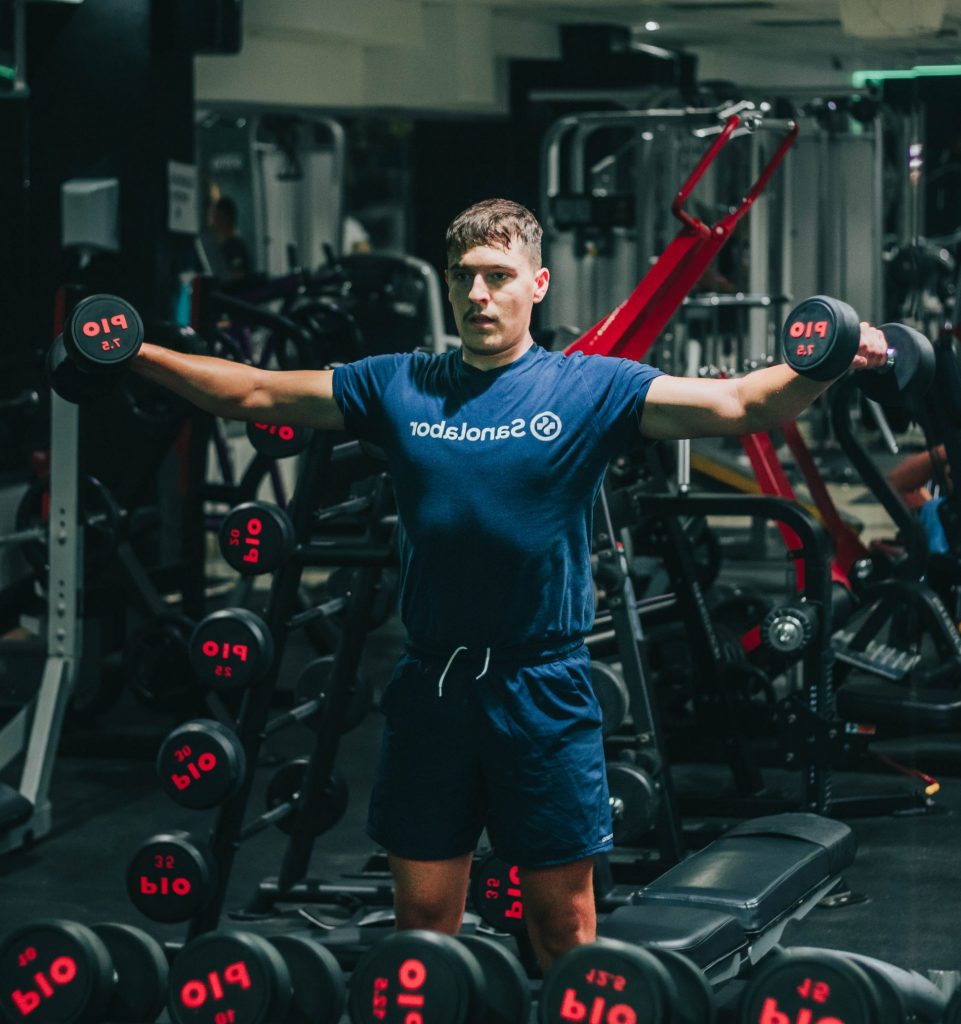
Benefits of Compound Exercises
As we’ve seen by scientific research in the upper section, compound exercises can improve many aspects of our physical health and performance. Here is a list of the main ones.
1. Boost Energy & Libido
Weightlifting in general boosts testosterone, muscular anabolism, and energy. But by and large, the compound exercise due to its effect of recruiting more muscle fibers or activating higher muscle mass percentage can amplify these effects.
2. Strength and Muscle Mass Gain
One of the most obvious effects of strength training, especially compound weightlifting is strength and muscle gains which significantly improve physical health, well-being, and athletic performance.
3. Fat-Loss and Weight-Loss
One of the main findings in the previous studies was that compound exercises in relation/comparison to the isolation workouts were able to improve VO2max and Fat-loss more. Plus adding muscle to your frame enables you to use calories more efficiently and speeds up your metabolism.
4. Joint Mobility
Doing compound movements over and over will improve your shoulder and hip mobility since you try to squat a little bit deeper or push further. While mainly being a contractile exercise, it stretches out the main muscle while we perform a functional movement pattern. As opposed to isolation which mainly pumps the muscle in limited ROM, which can shorten it and contribute to bad posture.
5. Posture & Spine Health
While excessive loads of weight with improper form will definitely hurt your spine, overall a healthy individual with proper squat, overhead press, deadlift, pull-up and bench-press training (weights + form) can increase the mass, activation, and strength of the key muscles that keep our spine erect, pushing our chest up.
6. Confidence & Looks
Undoubtedly, weightlifting can improve your confidence both by increasing testosterone and improving your looks. Aside from this, you will stand up straight, be stronger, and look better overall.
7. Muscular Endurance
The ability of a muscle to repeatedly perform, contract, and produce force for extended periods of time. Workouts that implement both strength and cardio are most popular for this component, an example would be HIIT which is regularly included in functional fitness group workouts.
8. Balance & Coordination
The ability of our bodies to feel where we are in space (proprioception) and facilitate compensatory movement is known as balance, while coordination has to do with our programming, anticipation, and preciseness of our movement. This one is especially important for older people, to prevent falls.
So the point of a functional fitness workout would be to include a great ratio of all these components: strength, balance, endurance, mobility, and flexibility. This doesn’t have to mean that all these components are part of one workout, but a weekly regime of functional fitness should incorporate all of them.
conclusion
– Compound movements can improve your mobility, and aerobic and anaerobic performance, and are great for muscle growth and strength gains as well as posture improvement.
– Best Upper Body Compound Exercises: Overhead press, Bench press, Weighted Dips, Pull-Ups, and Bent-Over row
– Best Lower Body Compound Exercises: Romanian Deadlift, Back Squat, Bulgarian Split Squat, Good Morning, and Hip Thrusters.
– Functional strength is building strength in the optimal Range of motion which translates into everyday movement & activities.
Frequently Asked Questions
Can you get six-Pack abs by doing compound exercises with heavy weights?
Yes. Abdominal muscles develop continually as you progress (if you incorporate them as stabilizers) your squat, dips, pull-ups, bench, and other exercises are usually not known to be abdominal specific. Plus compound exercises can help you burn fat which makes abs show off more.
What are compound exercises?
Compound exercises are a set of exercises that are focused on multi-joint movement, incorporating the biggest muscles in a complex manner that allows translation of that movement in real-life activities.
Which compound exercises are essential?
The List of foundational Compound exercises includes squat, dips, pull-ups, overhead press, deadlift, lunges, and bench press.
Can I effectively gain muscle with compound exercise?
Yes, you can. In fact, since compound exercises work bigger muscle groups, it will cause efficient muscle growth due to increased muscle anabolism and testosterone.
How can I improve my squat?
A lot of people profit from improving Hip mobility, Core Strength, and Glute Abductors but consistency is key with squat. Practicing it regularly 2-3 times per week can significantly improve your squat.

